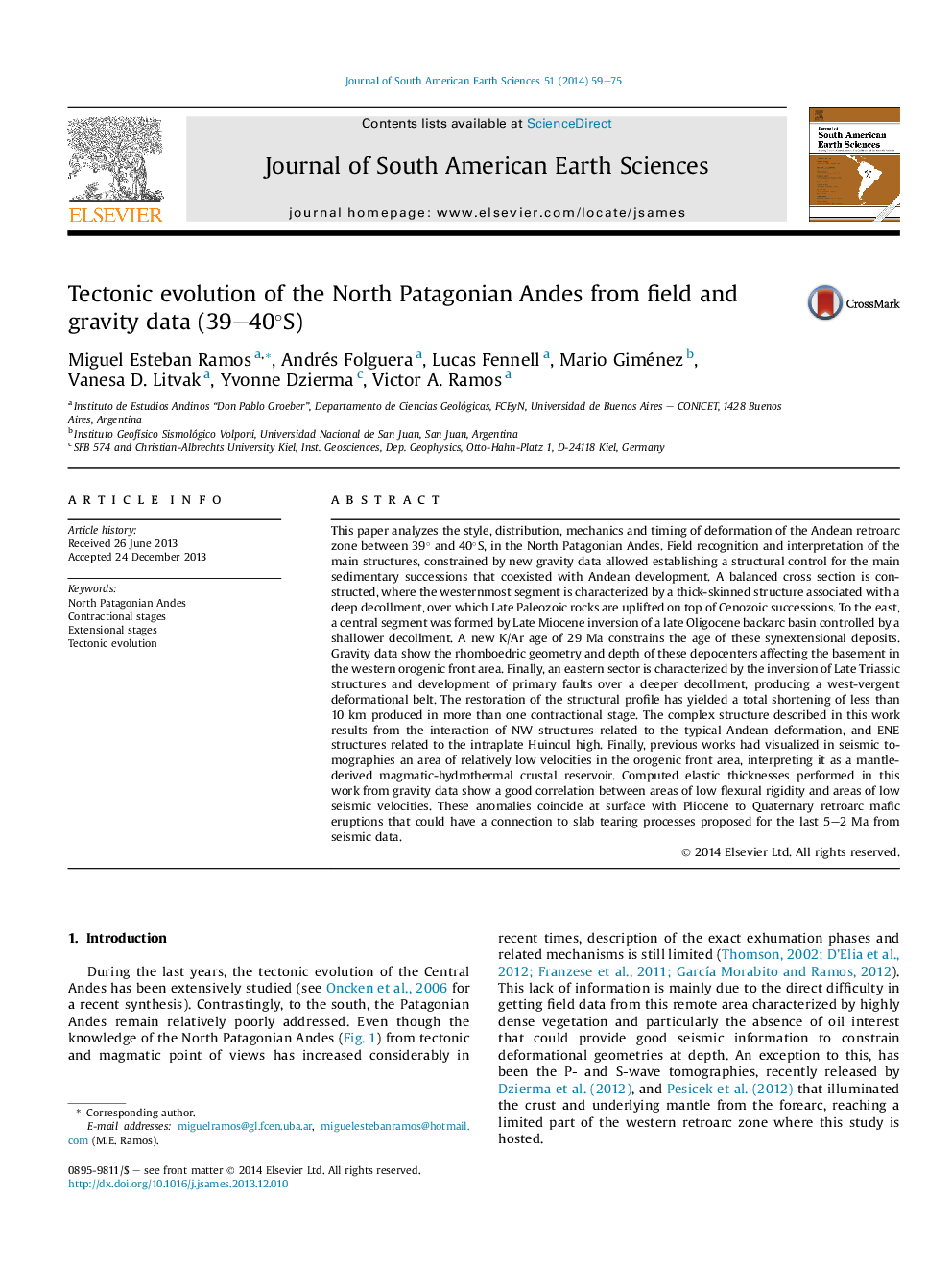| کد مقاله | کد نشریه | سال انتشار | مقاله انگلیسی | نسخه تمام متن |
|---|---|---|---|---|
| 4682271 | 1635158 | 2014 | 17 صفحه PDF | دانلود رایگان |

• Style and timing of deformation of the Northern Patagonian Andes (39°–40°).
• Surficial analyses show relationship between subduction geometry through time and structural styles.
• K–Ar ages constrained the Oligocene age of synextensional deposits.
• Geophysical and structural field data show the tectonic inversion of different segments.
This paper analyzes the style, distribution, mechanics and timing of deformation of the Andean retroarc zone between 39° and 40°S, in the North Patagonian Andes. Field recognition and interpretation of the main structures, constrained by new gravity data allowed establishing a structural control for the main sedimentary successions that coexisted with Andean development. A balanced cross section is constructed, where the westernmost segment is characterized by a thick-skinned structure associated with a deep decollment, over which Late Paleozoic rocks are uplifted on top of Cenozoic successions. To the east, a central segment was formed by Late Miocene inversion of a late Oligocene backarc basin controlled by a shallower decollment. A new K/Ar age of 29 Ma constrains the age of these synextensional deposits. Gravity data show the rhomboedric geometry and depth of these depocenters affecting the basement in the western orogenic front area. Finally, an eastern sector is characterized by the inversion of Late Triassic structures and development of primary faults over a deeper decollment, producing a west-vergent deformational belt. The restoration of the structural profile has yielded a total shortening of less than 10 km produced in more than one contractional stage. The complex structure described in this work results from the interaction of NW structures related to the typical Andean deformation, and ENE structures related to the intraplate Huincul high. Finally, previous works had visualized in seismic tomographies an area of relatively low velocities in the orogenic front area, interpreting it as a mantle-derived magmatic-hydrothermal crustal reservoir. Computed elastic thicknesses performed in this work from gravity data show a good correlation between areas of low flexural rigidity and areas of low seismic velocities. These anomalies coincide at surface with Pliocene to Quaternary retroarc mafic eruptions that could have a connection to slab tearing processes proposed for the last 5–2 Ma from seismic data.
Figure optionsDownload as PowerPoint slide
Journal: Journal of South American Earth Sciences - Volume 51, April 2014, Pages 59–75